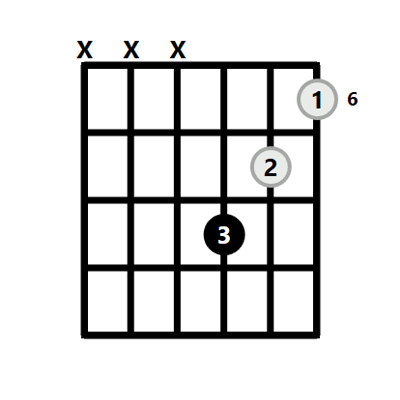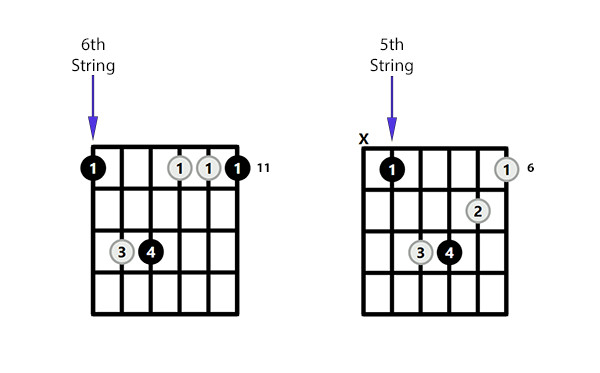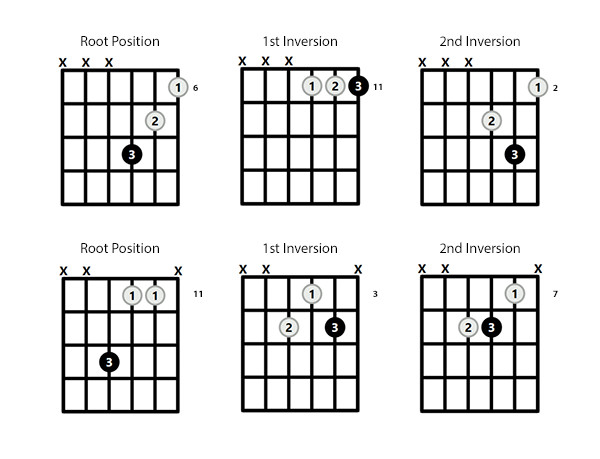The D sharp minor chord, often notated as D#m, is a crucial chord for guitarists to learn, especially when venturing into keys like B major or D# minor. While sometimes overshadowed by its enharmonic equivalent, E flat minor (E♭m), understanding and being able to play the D#m chord opens up a wider range of musical possibilities on the guitar.
This comprehensive guide will delve into everything you need to know about the D#m chord. We’ll explore the theory behind it, various ways to play it across the guitar fretboard, and how to effectively utilize it in your playing.
D#m Chord Theory: Unpacking the Basics
To truly master any chord, understanding its theoretical foundation is key. Here’s a breakdown of the essential theory behind the D#m chord:
- Notes: The D#m chord is composed of three notes: D#, F#, and A#.
- Scale Degrees: It’s built from the 1st (root), flat 3rd, and 5th degrees of the D# Major scale.
- Intervals: Like all minor chords, D#m consists of a minor third interval followed by a major third interval from the root note (D#).
- Relative Major: D# minor is the relative minor of F# Major.
- Key Chord: D#m is the tonic (i chord) in the key of D# minor. The complete set of chords in the key of D# minor are: D#m, E# diminished, F#+, G#m, A#, B, and Cx diminished.
Understanding these theoretical elements helps you not just memorize the chord shape, but truly grasp its place within music theory, aiding in improvisation, songwriting, and overall musical comprehension.
10 Diverse Ways to Play the D#m Chord
While the D#m chord isn’t naturally accessible through open guitar strings, there are numerous shapes you can use to play it. Here are 10 different ways to voice the D#m chord, expanding your fretboard knowledge and versatility.
 D# Minor Chord – 10 Shapes
D# Minor Chord – 10 Shapes
The Standard D#m Barre Chord Shape
The most common and foundational way to play D#m is using a barre chord shape rooted on the 5th string. This shape is movable, allowing you to play any minor chord by simply shifting it along the neck.
 D Sharp Minor Chord Guitar
D Sharp Minor Chord Guitar
This shape is based on the E minor open chord shape, barred up the neck. To play D#m, you’ll barre across all six strings at the 6th fret with your index finger. Your ring finger goes on the 8th fret of the A string, and your pinky finger on the 8th fret of the D string. The middle finger then frets the G string at the 7th fret.
The “Easy” or “Mini” D#m Chord Shape
For beginners or when quick chord changes are needed, the “easy” D#m chord shape is a great option. This simplified version uses just three fingers and focuses on the higher strings.
 Easy D Sharp Minor Chord
Easy D Sharp Minor Chord
To play this easy D#m, place your index finger on the 6th fret of the high E string, your middle finger on the 7th fret of the B string, and your ring finger on the 8th fret of the G string. This voicing is derived from the top three strings of the standard barre chord, making it a stepping stone to the full shape.
Step-by-Step Guide to Playing the Standard D#m Chord
For those who learn best with detailed instructions, here’s a step-by-step breakdown of how to form the standard D#m barre chord:
- Barre: Place your index finger across all five strings (E, A, D, G, B) at the 6th fret. Ensure a firm barre for clear notes.
- Third Finger: Position your ring finger on the 8th fret of the D string.
- Fourth Finger: Place your pinky finger on the 8th fret of the G string.
- Second Finger: Place your middle finger on the 7th fret of the B string.
- Strum: Strum down from the fifth string (A string) downwards to the first string (high E string). Avoid strumming the low E string for this voicing.
Practicing these steps slowly and deliberately will help you build muscle memory and ensure you’re forming the chord correctly and efficiently.
Exploring D#m Barre Chord Variations
Beyond the standard 5th-string root barre chord, you can also play D#m as a barre chord with the root on the 6th string. This offers another voicing and strengthens your barre chord technique.
 D Sharp Minor Barre Chord
D Sharp Minor Barre Chord
This 6th-string root barre chord shape is based on the A minor open chord shape. To play D#m this way, barre across all six strings at the 11th fret with your index finger. Then, place your ring finger on the 13th fret of the G string and your pinky finger on the 13th fret of the B string.
D#m Triads: Compact and Versatile Voicings
Triads are three-note chords that are excellent for exploring different voicings and navigating the fretboard. The D#m triad has three inversions:
- Root Position: D#, F#, A#
- 1st Inversion: F#, A#, D#
- 2nd Inversion: A#, D#, F#
 D Sharp Minor Triad
D Sharp Minor Triad
By playing these triads on different string sets, you can create six distinct D#m triad shapes, adding color and sophistication to your chord vocabulary. Experiment with these shapes to find new melodic and harmonic possibilities.
Keys Where the D#m Chord Resides
Understanding the keys in which D#m naturally occurs helps you use it effectively in songwriting and improvisation. The D#m chord is diatonic (naturally occurring) in these keys:
- D# minor: (D#m is the i chord)
- G# minor: (D#m is the iv chord)
- A# minor: (D#m is the III chord)
- F# Major: (D#m is the vi chord)
- B Major: (D#m is the iii chord)
- C# Major: (D#m is the ii chord)
Knowing these key relationships allows you to confidently incorporate the D#m chord into chord progressions and solos within these musical contexts.
Alternative and Useful D#m Chord Shapes
Beyond the common barre and easy shapes, there are other less conventional but equally useful ways to play D#m. These alternative shapes can be helpful for specific musical passages or to achieve unique voicings. Explore different areas of the fretboard to discover these variations and expand your sonic palette.
D#m Chord Substitutions: Adding Harmonic Color
Like many chords, D#m can be substituted with related chords to add harmonic interest and complexity.
- Extended Chords: D#m7, D#m9, D#m11, and D#m6 can often replace D#m, adding extensions and color.
- Relative Major Variations: Chords based on F# Major, the relative major of D# minor, such as F#6, F#maj7, and F#9, can create interesting substitutions, offering a brighter, yet related sound.
Experimenting with these substitutions can enrich your chord progressions and add emotional depth to your music.
Scales to Play Over the D#m Chord
Choosing the right scales to solo or improvise over a D#m chord is crucial for creating melodies that complement the harmony. Effective scales for D#m include:
- D# Natural Minor Scale (Aeolian Mode): The most fundamental minor scale, providing a classic minor sound.
- D# Harmonic Minor Scale: Adds a raised 7th degree, creating a stronger pull to the tonic and a more dramatic minor feel.
- D# Melodic Minor Scale: Differs in ascending and descending forms, offering melodic fluidity and harmonic richness.
Understanding these scales will empower you to craft compelling solos and melodies over the D#m chord.
Further Exploration
To deepen your understanding of the D#m chord and related concepts, explore these resources:
- D# natural minor scale
- D# harmonic minor scale
- How minor chords work
- Guitar Chords Page
- D# minor arpeggio
- D#m7 Chord
- D#m/F# chord
- D#m/A# chord
By mastering the D#m chord, you’re expanding your guitar skills and unlocking new musical avenues. Practice these shapes, explore the theory, and experiment with incorporating D#m into your playing to enhance your musical journey.
[

